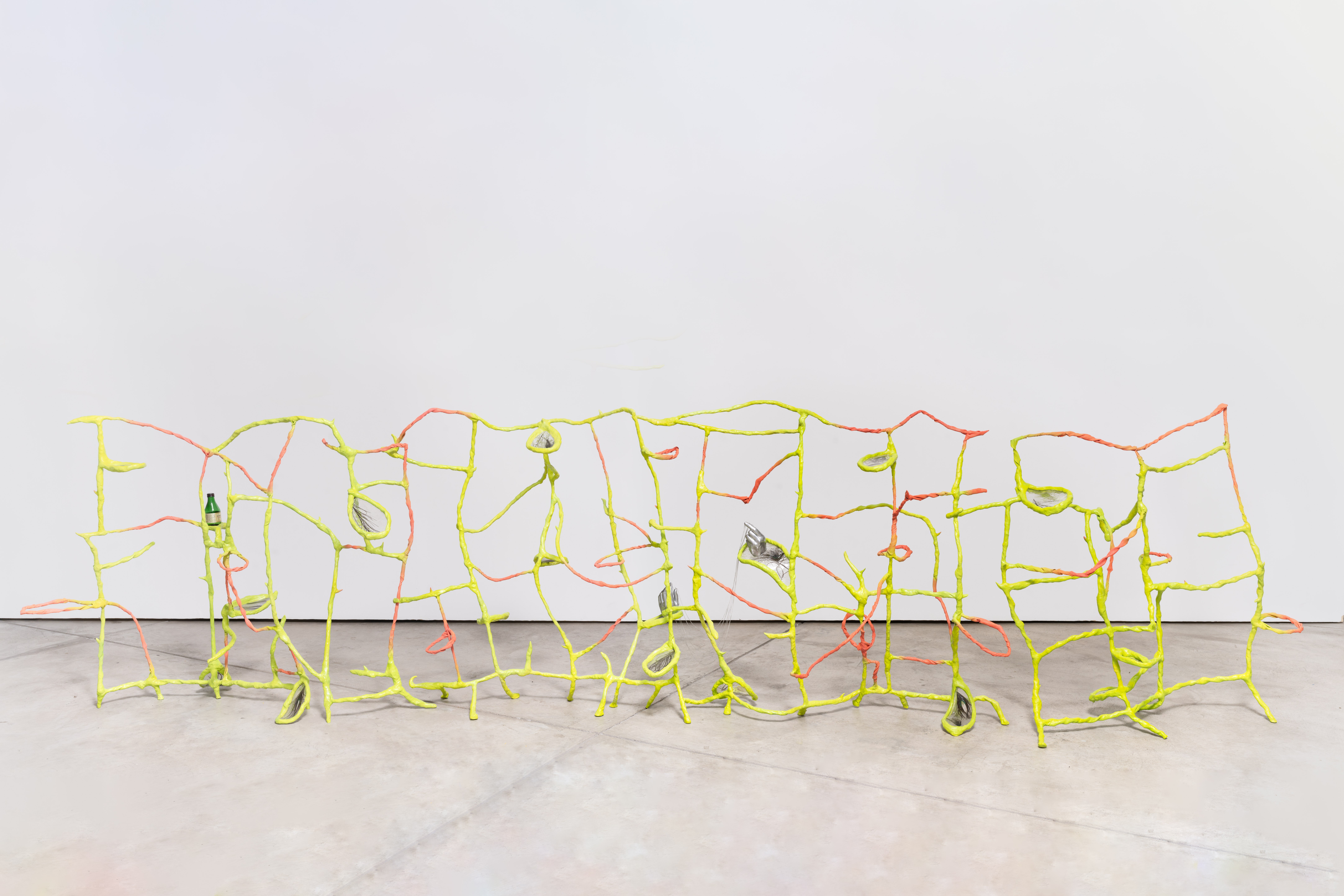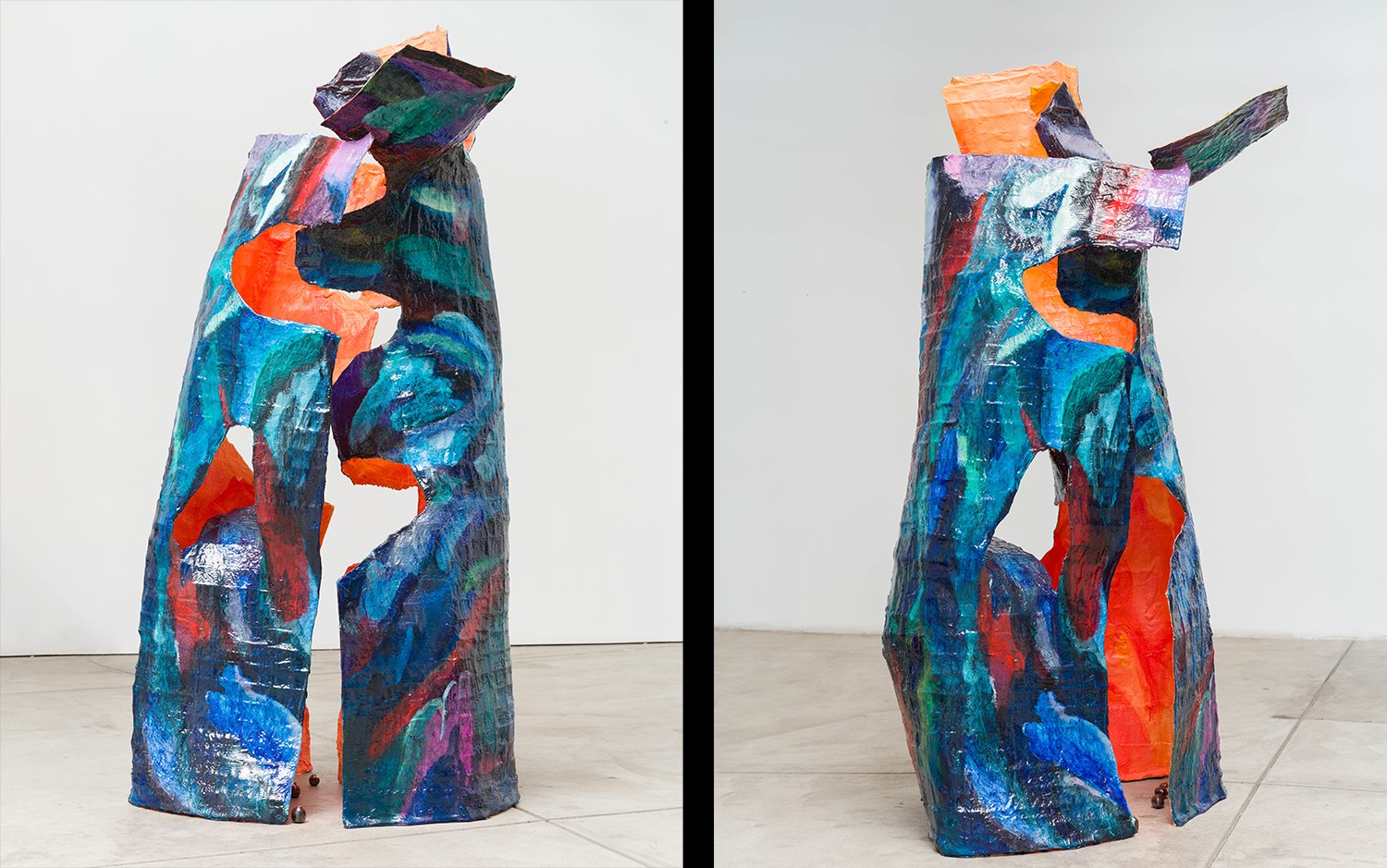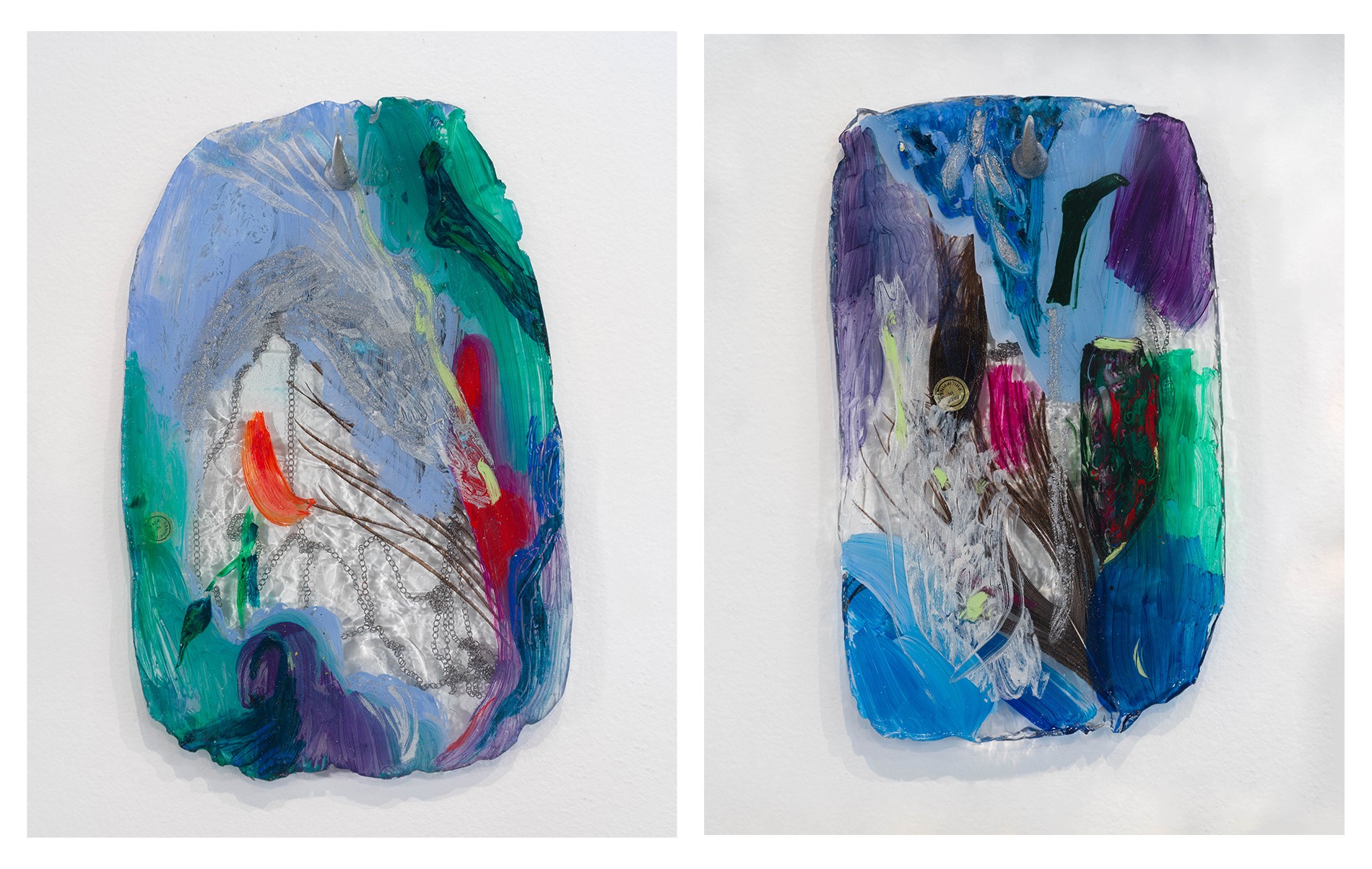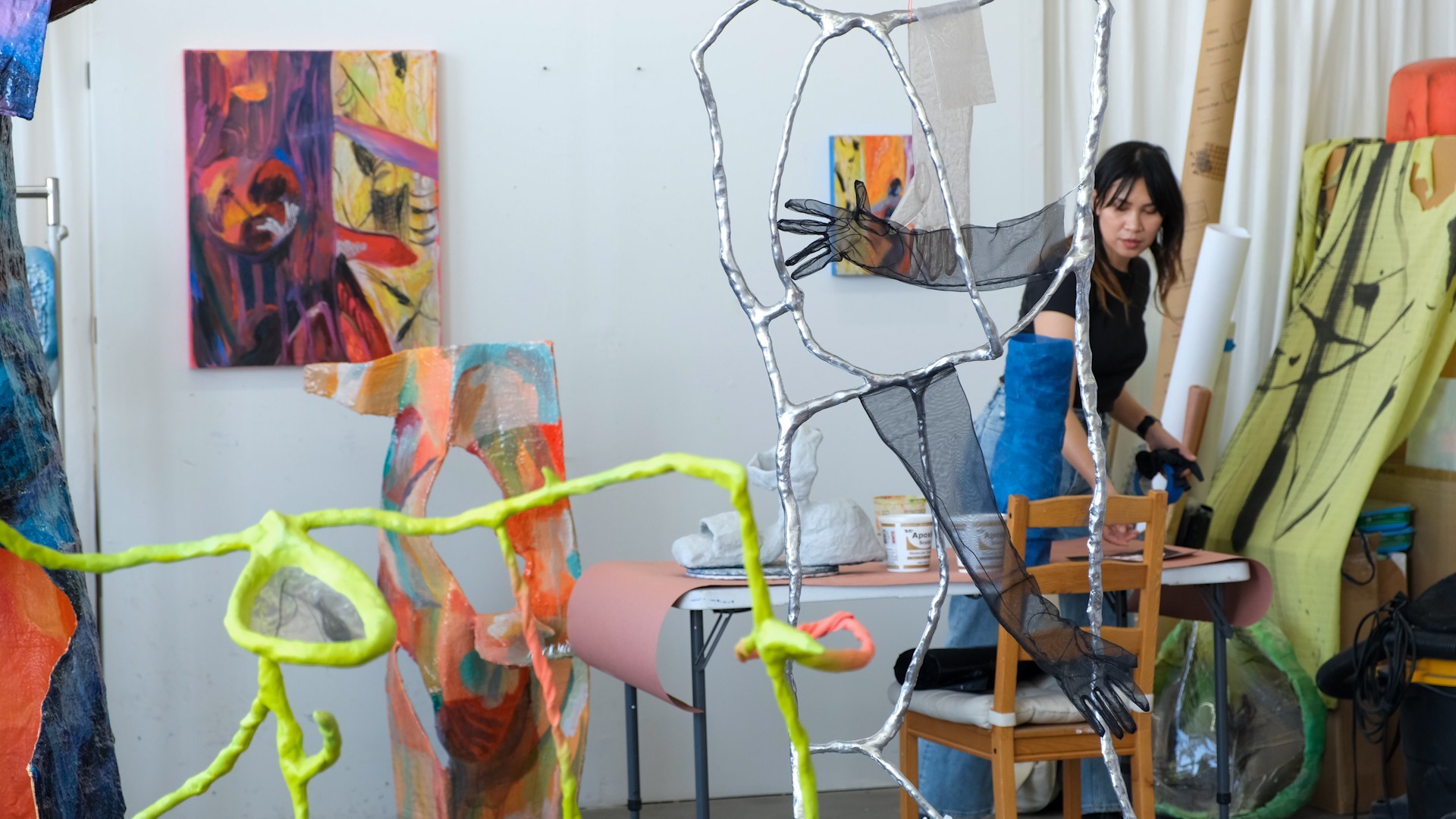We recently connected with Kim Garcia and have shared our conversation below.
Hi Kim, thanks for joining us today. What’s been the most meaningful project you’ve worked on?
When starting on a project in the studio, there is a drive to a personal matter that is reflective of a real and lived experience, and my art attempts to confront that experience, open it up, understand it, and process it.
I’m currently working on a series about my Dad, who was just recently diagnosed with Dementia but has lived with short-term memory loss since 2005 after his near-death experience (NDE). The project centers on his NDE, which was a story that helped ground him when things felt uncontrollable. It has served as a vehicle to not only break down elements of his venture into the afterlife but has also been a space that connects him to other memories from his past: his life growing up in the Philippines, how he made his way to America, and his yearning to return to back to the motherland. Of course, the gesture towards making this work, and likely the outcome of the forms, will be an attempt to memorialize his story. Deepen my own understanding and relationship with the Philippines while making a series that deepens my relationship with my father.


Awesome – so before we get into the rest of our questions, can you briefly introduce yourself to our readers.
I am an artist based in Los Angeles, and while my practice works across a variety of artistic mediums, it is primarily rooted in sculpture and drawing. Each series is deeply inspired by real-life experiences, allowing me to blend elements of reality with fiction to process intimacy and influence the arise from social interactions. The outcome is a vibrant collection of sculptures, drawings, and paintings that fictionalize a personal event.
I received a BA in Visual Arts from the University of California, San Diego, and received my MFA in Studio Art at the University of California, Irvine. Alongside my practice, I organize an artist community called The Cold Read, which is primarily an online critique group that generates feedback by writing thoughtful letters to the presenting artist. I also co-direct a project gallery, with artist Amy MacKay, called after hours, which hosts 2-person exhibitions to foster dialogue and exchange between artistic practices.


Have you ever had to pivot?
My life has had many transitions and pivots, even in the last four years. But, a more recent pivot would be leaving my 9-5 job, which financially supported my art practice for a long time. Most creatives share that familiar routine: work 9-5, hustle after work into the studio, and/or dive into community activities afterward. That’s where the name “after hours” for our project gallery came from—it’s all about that creative energy that kicks in after the workday. Although that schedule felt thrilling and active, I always felt anxious about getting more time in the studio, and I resented my energy levels for not being able to be in my best condition when I finally got into the studio.
Pivoting out of the 9-5 routine freed up my schedule to dedicate more time and be present in my art practice. It also allowed me to build healthier bodily habits, have space to meet new artists, dream up new community projects, and see more art.
I still work in education, and that schedule has complemented my art practice. I’m privileged to think about sculpture every day and have a dialogue with a younger generation of artists who have kept me inspired and sharp.

We often hear about learning lessons – but just as important is unlearning lessons. Have you ever had to unlearn a lesson?
A lesson I had to unlearn was saying “yes” to every and any opportunity. It’s great to do that to some degree, especially when exploring the art field; it’s good to calibrate and figure out precisely what you want to do by knowing and experiencing things you never want to do again. But it’s unhealthy if it turns into or triggers a scarcity complex, and you build this identity of always doing so much. At first, it can feel exhilarating to have the capacity to take on more things and be exposed to new experiences. Still, at a certain point, it is an entirely unsustainable model, leaving you exhausted and possibly resentful. In 2019, I was at a place in my life where I was working full-time, part of few artist communties, and exhibiting roughly once a month. There was abundant energy for any and all opportunities, which I think really impacted the quality of my work. It was clear to me some artists emphasized output, but for me, the output rate was at a cost to my practice. Not to say I don’t want to be actively exhibiting, but once a month is just way too much.
My new goal is to have a harmonious lifestyle where I can be in my art practice without compromising quality, have healthy rest and exercise, and always be in good company. I’m careful to use the word “harmonious” rather than “balanced” because, realistically, it’s difficult to maintain equal boundaries as priorities shift and change. Harmonious implies that all the different aspects work together to support one another.
I don’t want to burn out, and I want always to have the energy to be curious, inspired, and to be an artist engaged with the world around me well into my old age.

Contact Info:
- Website: https://kimgarcia.info/
- Instagram: https://www.instagram.com/kimwantscoffee/
- Other: https://testudomkt.com/artist/kim-garcia (Artist Spotlight Interview)
Image Credits
Kate Parvenski, Yubo Dong, and Ewa Słapa.


